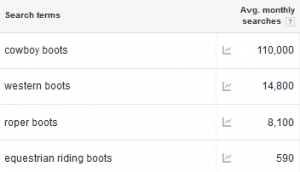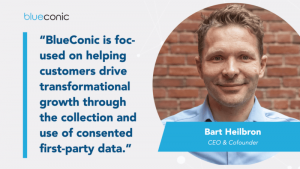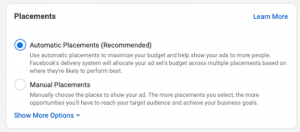Without persuasive power, your blog becomes a lonely set of web pages gathering dust.
No comments. No shares. No subscriptions.
No leads.
With persuasive power, your blog becomes a formidable content marketing asset. It attracts ideal customers and clients at all stages of the buying process.
It shuffles them into your marketing funnel, like people filing into a movie theater looking for the perfect seat.
It spreads your influence around the web, through social shares, backlinks, and search engine traffic.
All of your online marketing hopes and dreams can be realized with a blog that persuades and compels people to invest themselves (and their wallets) in what you can do for them.
And guess what?
The numbers tell a similar tale.
Check out these stats from the folks over at HubSpot:
- 82% of marketers who blog daily acquired a customer using their blog.
- 79% of companies that have a blog report a positive ROI for inbound marketing.
- 54% more leads are generated by inbound tactics than traditional paid marketing.
You know that this success is possible, but how do you actually write persuasive blog posts? How do you get some serious results from the articles you churn out?
Woah, woah, woah. In due time, young padawan.
First, let’s give your blogging some purpose.
Let’s talk about why you should be blogging in the first place.
To Blog, Or Not To Blog? There Is No Question
There is no question.
If you want to successfully integrate inbound marketing into your business plan, you need to be creating content. Not only that, you need to actively compel people to consume it (also known as content promotion).
What is one of the best ways to create content?
Blogging — plain and simple.
Yes, there are other forms of content to pursue, and they should become part of your complete content marketing strategy. However, blogging should be at the core of that strategy.
It’s one of the best ways to crank out useful information and distribute it around the web. Using content management systems, like WordPress and HubSpot, you can condense your knowledge into value-packed articles. You can become the resource your ideal customers are actively searching for – right now.
Blog content also happens to be widely consumed, by anyone from moms looking for new dinner recipes to engineers keeping up with the latest trends in their field.
Tell me, would you like to experience more of the following?
- Traffic to your website
- Email subscribers
- Qualified leads
- Sales
- Repeat customers and clients
Yes?
Well, a blog can make it happen for you.
What Are You Trying To Accomplish With Your Blog Posts?
Are you publishing blog posts simply because authorities like the Content Marketing Institute say you should?
Have you ever published a blog post with the sole purpose of getting engagement from your readers, only to see it remain at “0 comments”?
To be persuasive, you have to know what you’re trying to persuade people to do.
To run a blog that gets results, you have to know what results you’re trying to get.
Would you ever jump into a business without a plan?
No, because it would be tough to achieve your goals without a roadmap to get you there.
For the same reason, each blog post should have a purpose to it – an ultimate goal with a plan to achieve it.
Blog Posts That Build Traffic, Subscribers, And Leads
Jon Morrow says there are only two kinds of blog posts you should be posting: The kind that build traffic, subscribers, and leads, and the kind that build a deeper bond with the audience you already have.
Jon Morrow is a blogging master. Combined, he has helped Copyblogger, KISSmetrics, and Boost Blog Traffic bring in over $ 50 million dollars in revenue.
Needless to say, I trust his judgment.
Jon says that the posts that are most likely to get shared are instructional articles — the “How to” pieces that teach people a skill or show them how to do something.
These are also the posts that ultimately build traffic, convert that traffic into subscribers, and nurture those subscribers into leads and customers.
However, if you want serious results, you can’t publish any old instructional articles. You need to publish in-depth, well-researched, industry-leading content that wows p eople with the value it provides.
eople with the value it provides.
As Sonia Simone, Co-founder of Copyblogger, once said, “When your free content is so valuable that it makes you a little uncomfortable, you know you’ve got the mix right.”
You need to make these articles better than anything else out there on the topic. Sounds daunting, right?
At first, it is. It’s a tall order to fill.
Thankfully, an SEO expert named Brian Dean came up with a step-by-step technique to create this content. You can read the full guide right here, but I’ll give you a rundown below.
How To Write Persuasive Blog Posts
The more value you provide, the more persuasive your blog posts will be.
To provide as much value as possible, break down the topic completely.
This content is usually quite long (3,000 words or more). It’s actionable, so people can learn as they’re reading. It shows readers “how” to accomplish what you’re teaching, rather than “what” the topic is about.
Brian Dean’s technique involves three parts: Finding proven content, making it better, and promoting it around the internet.
The fastest way to find proven content is to head over to Buzzsumo.
Buzzsumo is special type of search engine. When you enter a search term, it brings up the most highly shared content related to that search term. It even tells you exactly how many times each piece has been shared.
Enter the topic you want to write an in-depth article about (for example, you could enter “content promotion”). If the top articles have been shared a good amount, you’ve got a hot topic. Read through each of those articles.
Next, head over to Google, type in the same search term, and read through the top articles in the search results.
As you’re reading, take note of two things:
- The information that’s mentioned over and over again
- The crucial information that isn’t being mentioned
Include both in your content. This will make sure you’re not leaving out information that’s standard for the topic and you’re including information that will set your content apart.
Typically, you’ll want to make this content longer, include screenshots, and use lots of authorities as sources, to add to your credibility.
The next step is to spend a good amount of time writing this content. Keep going over the top articles on the topic, and find different ways to make your article better.
The Final Piece In The Content Marketing Puzzle
So, you’ve found content that’s proven to be sharable, and you’ve made that content better than the rest.
Now it’s time to find some readers. For that, we use content promotion.
 No matter how great your content is, if you don’t tell people about it, they won’t come.
No matter how great your content is, if you don’t tell people about it, they won’t come.
There are different levels of content promotion. The most basic is posting your content once to each social media site. This should be standard practice after publishing an article.
However, content promotion goes much deeper.
Here are two of the top promotion tactics I’ve come across:
- LinkedIn groups
- Influencer outreach
LinkedIn Groups
LinkedIn groups are great places to engage and attract your ideal customers.
First, go to LinkedIn and search for groups related to your target audience. Search for both the occupation you want to attract and the industry your ideal customers are in.
Once you have found some relevant groups, join as many as possible.
Start participating in these groups and join in on the discussions. Then, whenever you publish a new article, post it in the same groups.
A caveat here. Don’t just randomly post everything you create. The post must be relevant to the conversation the group is having. Remember, you must add value to the conversation. You’re not trying to sell anything, just help people solve problems. If you post too much or place sales jargon in your comments, the moderators of the group may remove you.
One trick to get more engagement is to include a question in the title of your LinkedIn post. This will do two things:
- Most people get LinkedIn group updates in their email inbox. The title of the post is displayed as the email subject line. If you include a question, it increases the likelihood of people opening the email and clicking to view your post.
- Including a question will help spark a conversation about the article. If the conversation stays lively, your post might start trending. This means more people will see the post and click to read your content.
Once you have established yourself in these groups with the content you’re sharing, groups are also useful for getting in direct contact with potential leads.
Do a search in each LinkedIn group for the decision makers you want to get a hold of. This could be CEOs, CFOs, Marketing Managers, etc.
Put together a list of all the people you want to contact. Then send them a connection request.
If you don’t have their email address or a second or third degree connection, you can use your shared LinkedIn group as how you know them. If they’ve seen you active in the group and possibly read some of your content, it will drastically increase the likelihood of them accepting your request.
You don’t want to make entirely random LinkedIn connection requests. If you get denied these requests too many times, LinkedIn will only allow you to make requests if you have the person’s email address.
Once your prospects accept your connection, feel free to send them a message and start a one-on-one conversation.
Influencer Outreach
To perform influencer outreach, you’ll be cold emailing influencers asking them to share your content.
To find key influencers to contact, head over to Topsy.com. Search for your topic, and Topsy will bring up all of the influencers who have shared similar content.
The key is to find influencers who are followed by your ideal customers. Make a list of all of these influencers.
Next, go to their websites and grab their contact info. If you can’t find it, Google “the influencer’s name + email address” or try to message them on social media.
You’re going to tell them that you enjoy their work (be sincere) and that you just wrote an in-depth article on “insert your topic here.”
Tell them you’re proud of the work you’ve done and you’d like spread it to more people. Then, ask them if they wouldn’t mind sharing it if they think it’s a useful article.
Keep it short and casual, but make sure they know exactly what you would like them to do.
Some of these influencers have tens of thousands (and sometimes hundreds of thousands) of social media followers. Even with a small number of influencers sharing your article, you can drive a sizeable amount of traffic. This will lead to even more shares, comments, and subscribers.
Two More Ways To Promote Your Content
Here are two more ways to promote your content:
- Forum marketing
- Quora
These methods aren’t as targeted as LinkedIn groups or reaching out to influencers, but they will help you consistently reach your general target audience, if you add these tactics into your daily promotion strategy.
Forum Marketing
To conduct forum marketing, find one to two forums where your target market hangs out.
If you can’t think of any off the top of your head, head over to Google and search for “your topic + forum.” For example, you could search for “engineering forum.”
Once you’ve found an active forum, create an account and edit your signature. Your signature is very important, because it will be the gateway to your content.
Write copy that compels people to click and read your article. Give them a strong reason for clicking through.
Here’s an example:
“Lonely blog? No comments? No shares? I just published a 4,000-word article on content promotion. If your blog is just a set of lonely web pages gathering dust, this article will help you turn it into a lively community.”
After that, all you have to do is go through the forum and help people by providing in-depth answers to their questions.
If you make forum marketing a part of your daily promotion strategy (I typically do it for an hour per day), you’ll drive consistent traffic over time. You can also build a reputation on the forum, helping to spread your business through word of mouth.
Quora
Promoting your content on Quora is similar to forum marketing.
Create a Quora account, search for the topic related to your article, and start answering people’s questions about that topic.
At the end of each answer, link to your article as the natural next step to get more information.
Quora is nice because you can answer a ton of questions in a short amount of time. The more questions you answer, the more traffic you’ll drive to your content.
Add this to your daily promotion strategy as well.
Moving Forward
By rinsing and repeating this process, the overall quality of your blog will increase steadily – along with your readership.
If you do your research and publish content you know your ideal customers and clients will love, all you have to do is get it in front of their eyes, and you should get the results you’re looking for.
You will drive traffic. You’ll get subscribers and leads. And, ultimately, you will convert them into happy customers.
Instead of lonely web pages gathering dust, your blog will be a persuasive content marketing machine, hosting a lively community who supports your business 100%.
(284)
Report Post






